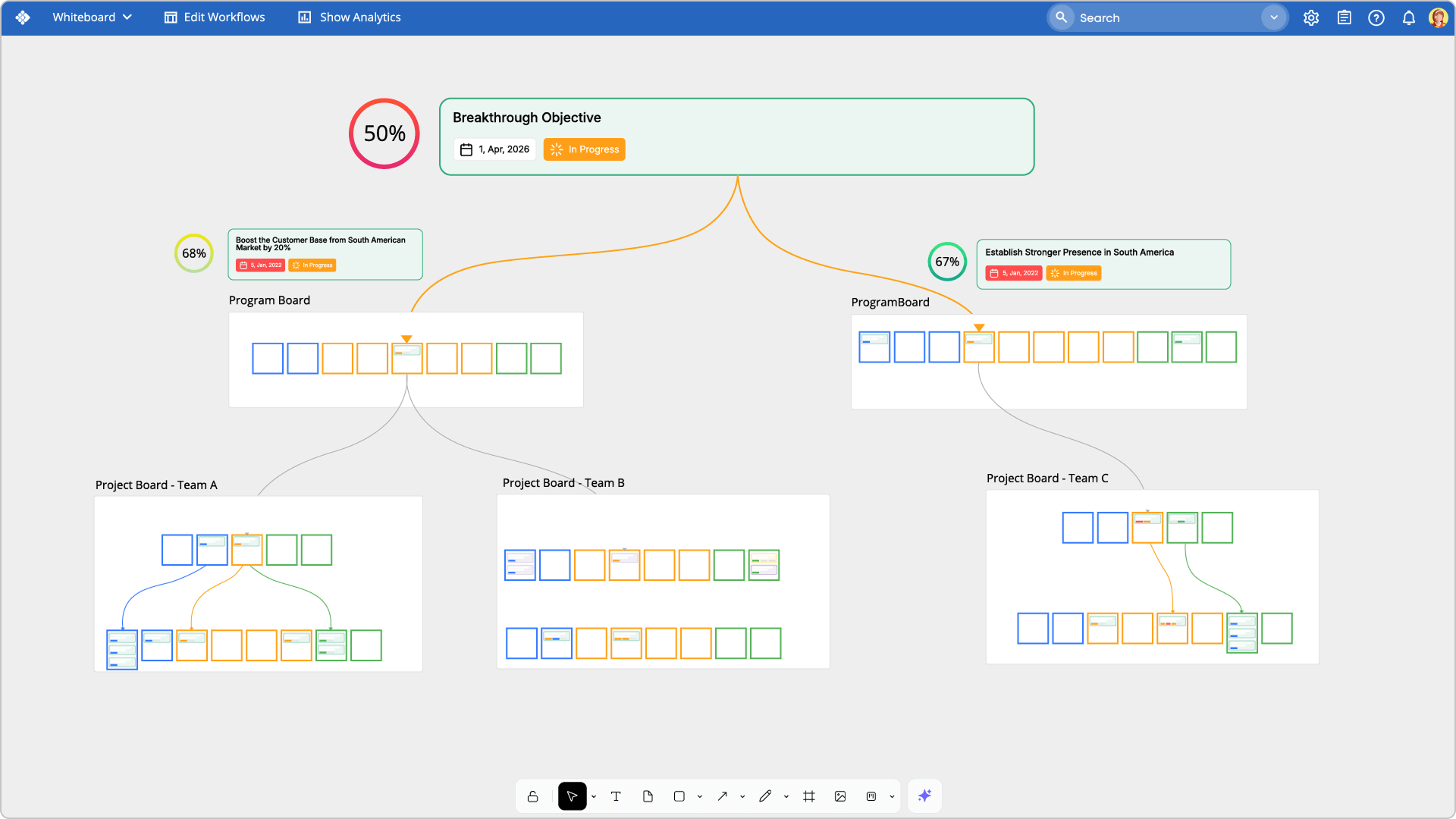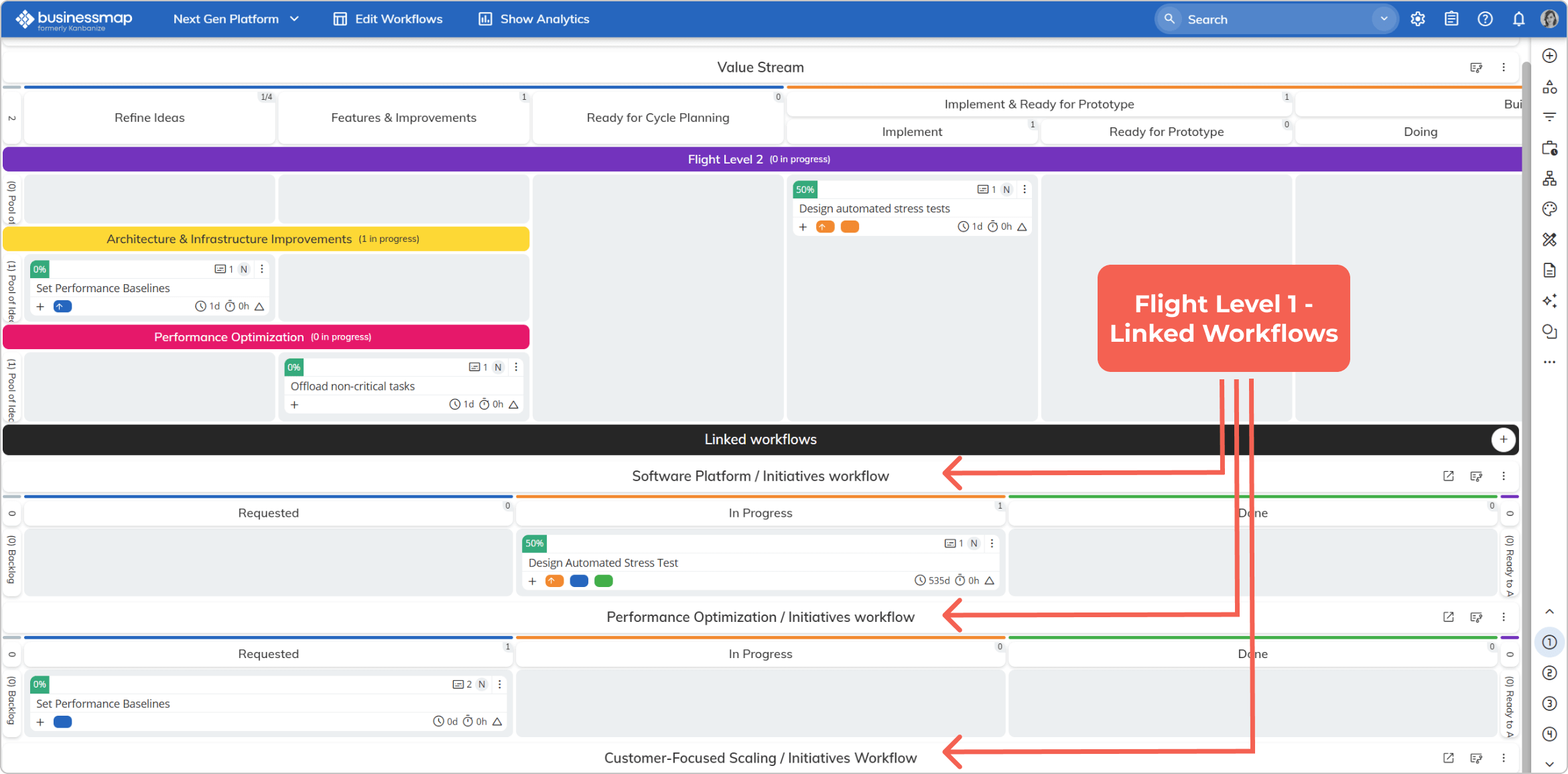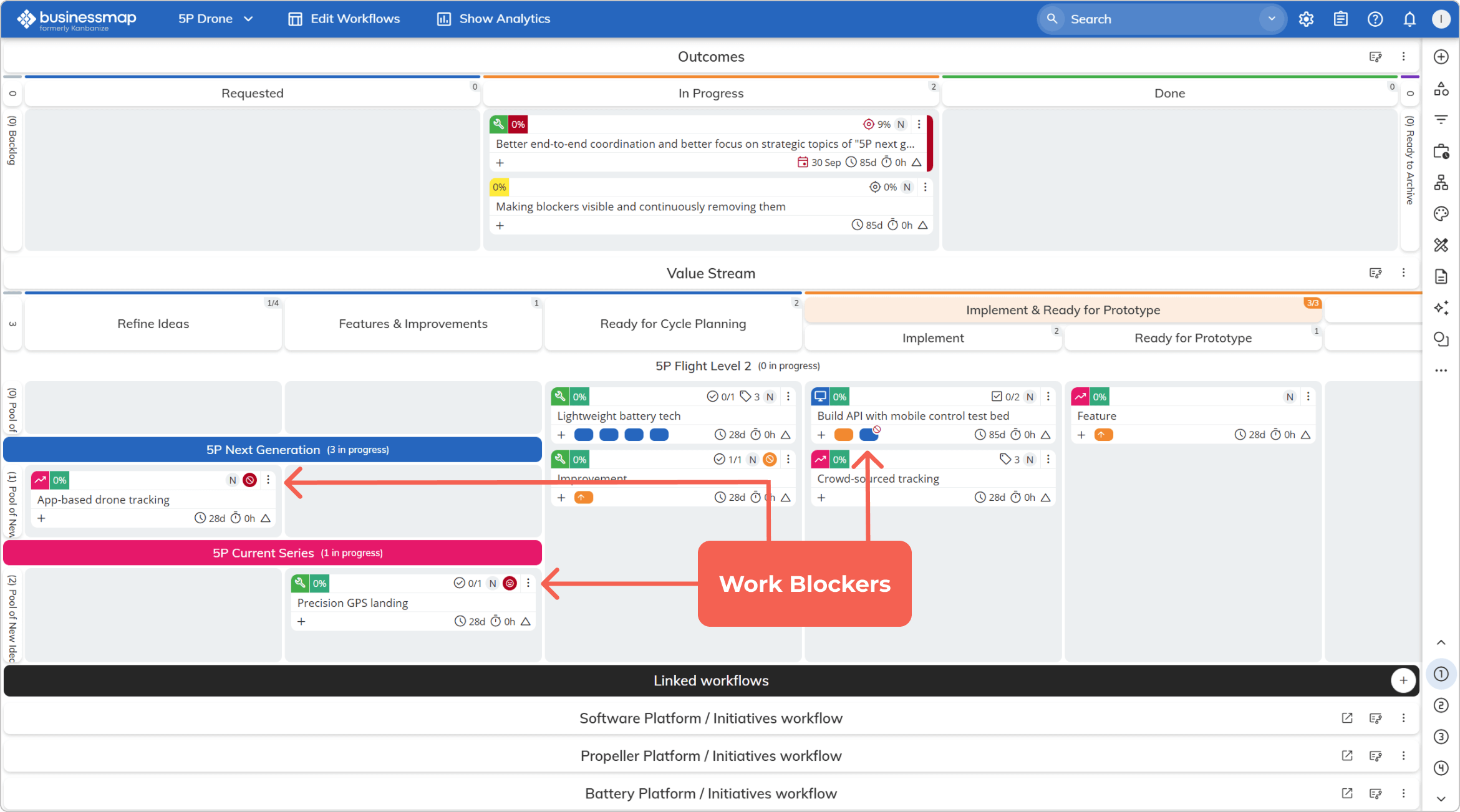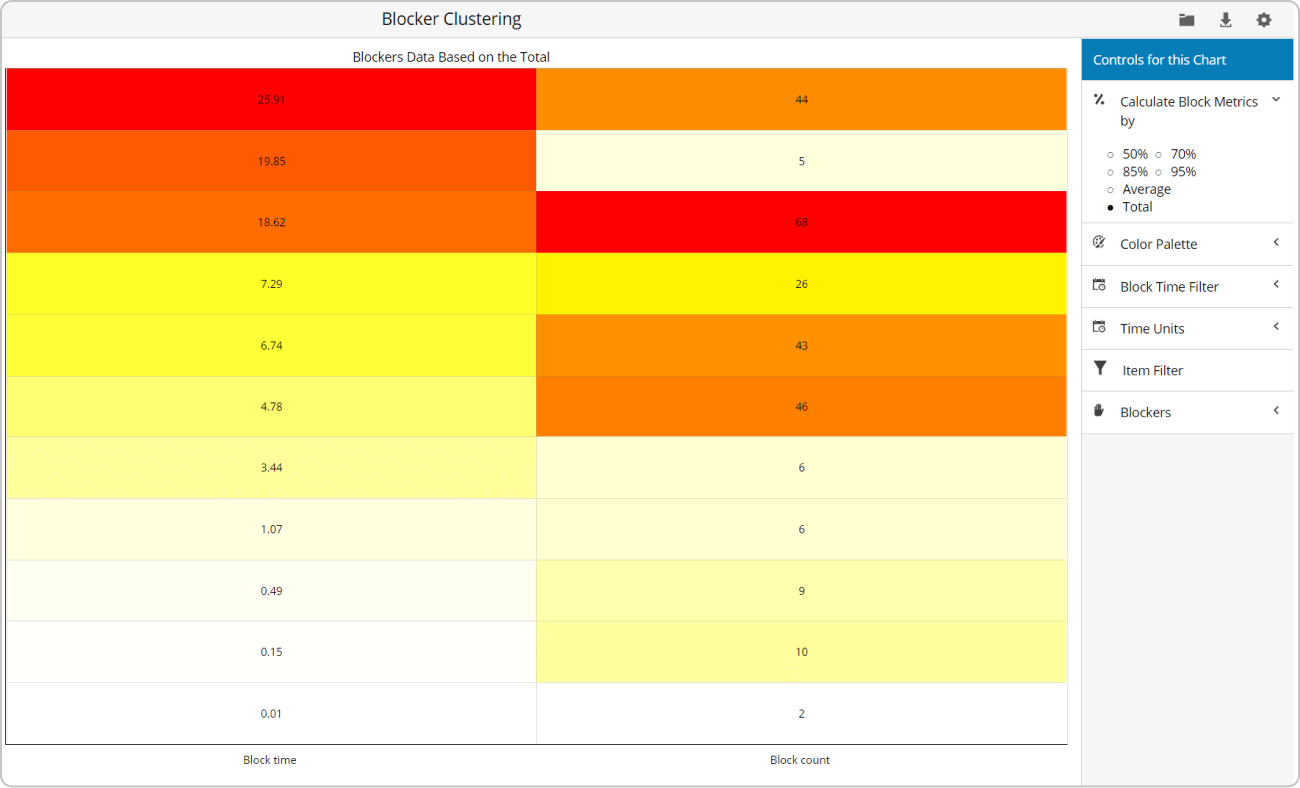In any organization delivering complex products across multiple teams, dependencies are inevitable. But that's not the real problem.
The real problem is how slowly we see them, how poorly we communicate about them, and how long it takes to resolve them. Why is that the real problem? In a fast-moving environment, dependency delays mean delivery delays.
That's why effective dependency management is crucial. In practice, this happens through coordination. And good coordination starts by visualizing dependencies, tracking them across teams, and turning hidden blockers into actionable signals.
In this chapter, you'll learn how to build a system that doesn't just react to dependencies but actively manages them - using the Flight Levels model and Businessmap as your coordination layer.
Dependencies Aren't the Problem - Delay Is
In organizations with high interdependence, dependencies are natural, especially when you're coordinating across hardware, firmware, design, QA, sustainability, and manufacturing.
What creates chaos is when:
- Teams don't know what others need from them
- Delivery is paused because no one saw a blocker coming
- Stakeholders wait for updates instead of seeing real-time progress
Visualizing dependencies at Flight Level 2 is the first step to fixing this. You can't manage what you can't see.
What Types of Dependencies Should You Visualize?
Not all dependencies are created equal. To manage them effectively, you first need to classify them.
Here are four common types you should actively visualize on your FL2 coordination board:
-
Task Dependencies: One initiative must be completed before another can begin.
-
Resource Dependencies: Two or more teams rely on the same person, tool, or capacity.
-
Knowledge Dependencies: One team needs information, specs, or validation from another.
-
Product/Component Dependencies: Cross-functional components must align for end-to-end delivery.
By tagging and mapping these dependencies directly into your FL2 board, you move from implicit risk to explicit visibility.
How to Visualize and Manage Dependencies
A Flight Level 2 board is more than a status tracker - it's the coordination system that makes work between teams visible, manageable, and predictable. If you want to manage dependencies effectively, you must build them into how you see the work, not treat them as hidden risks.
Below are three practical ways to visualize and manage dependencies directly on your FL2 board.
1. Use Whiteboards to Surface All Dependencies
The first step isn't to eliminate dependencies - it's to see them clearly. Every large organization is a network of interrelated dependencies; in fact, major transformations often increase cross-functional dependencies, which make these links even more critical.
Whiteboards in Businessmap give you a flexible canvas to map all known dependencies transparently, from strategic initiatives down to delivery-level items. By visually laying out initiatives, teams, and interconnections, leaders and teams can understand where handoffs occur, what's blocking the flow, and how dependencies affect priorities.
The goal here is absolute transparency: instead of pretending dependencies don't exist, make them visible so they can be actively managed.
 Visualizing cross-team dependencies contributing to the same objective using Businessmap AI Canvas
Visualizing cross-team dependencies contributing to the same objective using Businessmap AI Canvas
2. Use Portfolio Boards to Manage Dependencies
In Businessmap, portfolio boards let you go beyond visualization to manage multi-team dependencies actively. You can:
- Connect initiatives across delivery teams with Linked Workflows
- Map strategic initiatives (parent) to FL2 deliverables (children) with parent-child card links
- Show "dependent on" or "blocked by" relationships using visual signals or links between cards
Example: A sustainability initiative to switch to recyclable battery casings is split across the Materials, Compliance, and Packaging teams. A Businessmap portfolio board links all three delivery streams to the parent initiative. A delay in Compliance automatically flags the others.
 Visualizing how different teams contribute to the same value stream using Linked Workflows in Businessmap
Visualizing how different teams contribute to the same value stream using Linked Workflows in Businessmap
3. Add Visual Blockers for Newly Emerged Dependencies
Sometimes dependencies aren't planned - they emerge. When they do:
- Add a visual blocker to the affected work item
- Tag the reason (e.g., "Waiting on Compliance Sign-Off")
- Ensure it shows up on the coordination board and is reviewed during syncs
This turns your FL2 board into a real-time map of dependency health - not a static report.
 Using visual signals to indicate work interruptions
Using visual signals to indicate work interruptions
How to Identify the Most Impactful Dependencies to Manage First
You can't resolve every dependency at once. Focus on the ones that delay the flow the most.
Use these three prioritization methods:
-
Frequency: Does this dependency occur often across multiple initiatives?
-
Impact: How much does it delay delivery or cause rework?
-
Predictability: Can we see it early enough to manage it, or does it always catch us off guard?
Example: The Quality Assurance team is involved in almost every drone product release. Their limited capacity often causes bottlenecks. This is a high-frequency, high-impact resource dependency and should be proactively visualized and planned around.
In Businessmap, you can:
- Use blocker analytics to see which dependencies slow you down most
- Tag and filter recurring blockers to surface root causes
 Visualizing dependencies delaying a project the most using the Blocker Clustering chart in Businessmap
Visualizing dependencies delaying a project the most using the Blocker Clustering chart in Businessmap
How to Build Systems that Reduce Dependency Resolution Time
Visualizing is just step one. To resolve dependencies faster, you need to design the system around them. Businessmap helps you create such a system with the following four practices.
-
Entry/Exit Criteria: Don't move work forward until dependencies are cleared. E.g., "Cannot move to development unless Compliance signs off on materials spec."
-
Pull Policies: Prevent teams from pulling in work that's not ready. E.g., "Only start integration when both software and hardware prototypes are finalized."
-
Dependency Syncs: Set up a weekly coordination meeting to clear blockers across Flight Items. For example, weekly dependency meetings can be introduced using coordination boards, where the focus is on surfacing blockers early and reducing delivery lead time.
-
Automated Alerts: Use Businessmap to notify owners when their delay blocks another stream.
How to Enable Proactive Dependency Communication
Effective dependency management requires communication triggers, not just data.
Here's how to make it work:
- Visual blockers should trigger follow-ups - not just sit idle
- Use shared views in Businessmap filtered by unresolved dependencies
- Assign ownership to every dependency (not just teams, but individuals)
- Discuss open dependencies as a standing agenda item in every Flight Level 2 sync
- Use confidence indicators to surface risk and open up conversations
Example: In a Green Drone Initiative, the Firmware team flagged low confidence due to unclear compliance specs. The Product Manager was notified automatically, and a cross-team review was scheduled to align on requirements.
With this system in place, dependencies shift from being surprises to triggers for collaboration.
Make Dependencies Visible, Prioritized, and Fast to Resolve
When you visualize dependencies clearly, prioritize them intelligently, and build systems for early detection and resolution, they become signals for coordination, not roadblocks to delivery.
Flight Level 2 coordination boards are the ideal place to manage this. They give you the shared space, structure, and rhythm to:
- Align across teams
- Spot hidden blockers
- Resolve issues in days - not weeks
- Keep strategy moving without friction
In a world where speed and sustainability both matter, that's not just operational efficiency; it's a competitive advantage.
Ready to see Businessmap in action?





 Visualizing cross-team dependencies contributing to the same objective using Businessmap AI Canvas
Visualizing cross-team dependencies contributing to the same objective using Businessmap AI Canvas Visualizing how different teams contribute to the same value stream using Linked Workflows in Businessmap
Visualizing how different teams contribute to the same value stream using Linked Workflows in Businessmap Using visual signals to indicate work interruptions
Using visual signals to indicate work interruptions Visualizing dependencies delaying a project the most using the Blocker Clustering chart in Businessmap
Visualizing dependencies delaying a project the most using the Blocker Clustering chart in Businessmap

